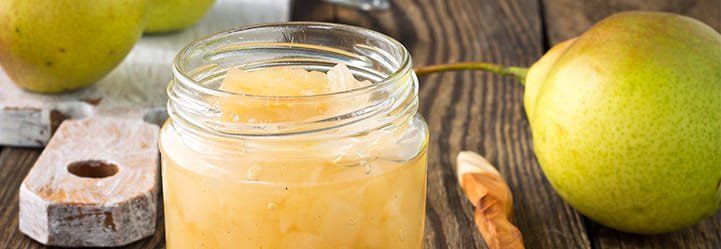Preserving Fruits: The Best Ways to Prevent Spoilage
Alimentos SAS • Jun 30, 2021
The food industry is constantly adapting to an economic landscape that changes quickly, driven in part by social and technological changes. As a result, preserving fruits effectively has become essential. This ensures food quality, helps to reduce food waste, and increases consumer demand.
In fact, multiple food preservation methods help maintain fruit quality for as long as possible. For enterprises, appropriate investment in storage, packaging, and processing technologies is essential. Not only does it strengthen their market position and set them apart from competitors, but it also contributes to a more sustainable food system. In this article, we’ll delve into the different methods available for preserving fruits and how they are shaping the future of the food industry.
Types and Uses of Preserved Fruits in Food Manufacturing
A variety of preserved fruits is marketed worldwide for personal consumption and food manufacturing (Research and Markets, 2025). The corresponding markets generate billions of dollars. For instance, in 2024, the global dried fruit market was valued at USD 12.02 billion and is expected to expand at a compound annual growth rate (CAGR) of 5.6% between 2025 and 2030 (Grand View Research, 2025).
These are the main types of preserved fruits:
- Cooked, prepared, dried, or frozen whole fruits or pieces of fruit
- Purees
- Pastes
- Jams and jellies
- Marmalades
Preserved fruits can be consumed as they are, as is the case with canned peaches. They are also a useful ingredient. For example, fruit puree can be used in baked goods, juices, and smoothies, as it retains taste and nutrients from fresh fruit. Products like jams and marmalades are also frequently used to sweeten and flavor.
These fruits are commonly used not only in consumers' kitchens but also in food manufacturing. They can be pivotal in material management processes dealing with the necessary elements to create edible food products.
Why is Preserving Fruits Necessary?
Preserving fruits is essential for enterprises aiming to provide high-quality fresh fruits and ensure food safety. This process begins at harvest and continues through every stage of storage, inventory management, transportation, and distribution until the fruits reach consumers.
At every stage, the challenge lies in preventing quality deterioration and spoilage. Quality loss in fresh crops stems from a number of factors, such as bruising or insect or rodent damage. Spoilage, on the other hand, is usually caused by the growth of microorganisms in food (University of California, n.d.), such as bacteria, yeasts, and molds. Due to its acidic content, fruit is prone to the latter two (James & Kuipers, 2003).
Food preservation inhibits spoilage and leads to the availability of safe, nutritious food for extended periods. Preserving fruits and other perishable products allows consumers to enjoy a wide variety of foods year-round, even if they are seasonal (University of California, n.d.).
Learn more here about our frozen fruit pulp.
What Are the Methods for Preserving Fruits?
The food industry has developed or refined various methods of preserving fruits. he ultimate goal is to eliminate spoilage agents while preserving the nutritional value and taste of fresh produce. By doing so, the quality of conserved fruit products along the food supply chain is secured and good manufacturing practices are established.
These are today’s leading methods of preserving fruits in the food industry:
Dehydration
Dehydration conserves food by removing moisture, which is a fostering environment for microorganism growth (Preserve and Pickle, 2023). For fruits, the main drying processes include::
- Drying using an oven or a dehydrator.
- Sun drying, which is the most natural process, but also the one with the least controlled conditions. It needs direct sunlight and an average humidity below 20%.
Chemical Processing
This method typically involves mixing a high concentration of sugar with fruit pulp or juice to create an environment where molds and yeasts struggle to reproduce (Food and Agriculture Organization of the United Nations, n.d.). As sugar contains very little water, it dehydrates any organisms it comes in contact with, inhibiting their growth (Preserve and Pickle, 2023).
Jams, jellies, fruit cheeses, and fruit drink concentrates are all sugar-conserved. They require sterilized, sealed packaging to prevent contamination.
Heating
Heat is one of the most common and effective ways of preserving fruits. It kills microorganisms and inactivates enzyme activity leading to decay. The process includes (James & Kuipers, 2003):
- Placing fruits in heat-resistant containers (cans or glass jars).
- Heating them in boiling water (up to 212°F) due to their low pH level.
- Storing the containers properly for maximum preservation.
Freezing
Freezing foods causes microorganisms to enter a dormant state, preventing reproduction. It preserves fruits as long as their environment remains cold enough. These are the two main processes involved:
- Mechanical, which withdraws heat from the product by circulating a refrigerant in a freezing system.
- Cryogenic, which swiftly freezes products by directly applying liquid nitrogen or solid carbon dioxide.
- Our long-life fruit pulp is properly preserved.
Food Processing Techniques for Preserving Fruits
Food processing techniques are highly effective for preserving fruits. They help maintain the natural characteristics of fruits, reducing the need for artificial preservatives or high-temperature treatments. This, in turn, extends their shelf life while preserving quality and freshness.
Lyophilization
Lyophilization, or freeze drying, consists of extracting water from fruit by first freezing it and then subjecting it to a vacuum (FDA, 2014). These are the advantages of this technique:
- Freeze-dried fruits preserve a high percentage of vitamins, minerals, and natural flavors. Other drying methods compromise these nutrients.
- Removing moisture prevents microbial growth and oxidation, helping to keep fruits fresh and flavorful.
- Freeze-dried fruits are easy to transport and rehydrate.
In fact, high-pressure processing is gaining popularity as a way to better preserve nutrients, taste, and texture in food, especially moist products like fruit purees and jams (Thyssenkrupp, n.d.).
Cold Pasteurization
Cold pasteurization uses extremely high pressure to eliminate fruit pathogens while preserving their quality. This technique relies on microporous membrane filters to capture most bacteria and yeasts, eliminating the need for heat to reduce the microbial load. These are its advantages:
- Protection of the natural taste, texture, color, and nutritional profile of fruits.
- Bacteria control without chemical preservatives.
Final Notes on Preserving Fruits
These are some interesting closing facts about fruit preservation (SmartSense, 2018):
- Preserving fruits (along with agriculture) enabled the shift from nomadic communities to settled societies.
- Many early societies preserved fruits in honey or liquid from sugar cane. In fact, the Greeks and Romans mastered the use of heated sugar and fruit pectin as an emulsifier.
- Canned fruit hails from the early 1800s when the French government offered a reward to any inventor capable of effectively preserving food to feed armies during the Napoleonic wars.
Effective fruit preservation methods optimize distribution, help maintain quality and satisfy global market demands. Using such techniques ensures sustainability, reduces food waste, and enhances profitability in a competitive industry. If you want to learn more or want to purchase our products, you can visit our website.
Bibliographic References
- FDA (2014). Lyophilization of parenteral (7/93). U.S. Food and Drug Administration, FDA.
- Grand View Research. (2025). Dried fruit market size and share: Industry Report, 2030. Dried Fruit Market Size and Share - Industry Report, 2030.
- James, F. & Kuipers, L. (2003). Preservation of fruits and vegetables. Agrodok, 03. Agromisa/CTA.
- Oliveira, M.H., & Sulaiman, A. (2019). Polyphenoloxidase in Fruit and Vegetables: Inactivation by Thermal and Non-thermal Processes. Encyclopedia of Food Chemistry.
- Preserve & Pickle (2023). Preserve Apples - All The Ways Of Preserving Apples. Preserve & Pickle.
- Research and Markets (2025). 2025 Preserves, Jellies, Jams, Peanut Butter, and Honey Wholesale Global Market Size & Growth Report with Updated Analysis & Forecasts. Research and Markets Ltd 2025.
- SmartSense (n.d.). Food Safety Milestones Part 1: A Short History of Food Preservation. SmartSense https://blog.smartsense.co/short-history-of-food-preservation
- Thyssenkrupp (n.d.). What is HPP? Thyssenkrupp.
- University of California (n. d.) Food Safety - UC Agriculture and natural resources. University of California.
- UNL Food - Nebraska (n.d.). How Food Spoils. University of Nebraska.
















